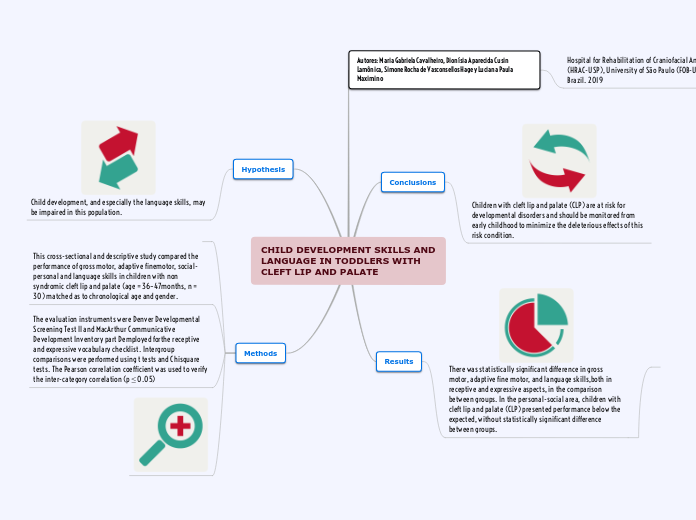CHILD DEVELOPMENT SKILLS AND LANGUAGE IN TODDLERS WITH CLEFT LIP AND PALATE
Hypothesis

Child development, and especially the language skills, may be impaired in this population.
Methods
This cross-sectional and descriptive study compared the performance of gross motor, adaptive finemotor, social-personal and language skills in children with non syndromic cleft lip and palate (age = 36–47months, n = 30) matched as to chronological age and gender.
The evaluation instruments were Denver Developmental Screening Test II and MacArthur Communicative Development Inventory part Demployed forthe receptive and expressive vocabulary checklist. Intergroup comparisons were performed using t tests and Chisquare tests. The Pearson correlation coefficient was used to verify the inter-category correlation (p ≤ 0.05)

Autores: Maria Gabriela Cavalheiro, Dionísia Aparecida Cusin Lamônica, Simone Rocha de Vasconsellos Hage y Luciana Paula Maximino
Hospital for Rehabilitation of Craniofacial Anomalies (HRAC-USP), University of São Paulo (FOB-USP), Bauru, SP, Brazil. 2019
Conclusions

Children with cleft lip and palate (CLP) are at risk for developmental disorders and should be monitored from early childhood to minimize the deleterious effects of this risk condition.
Results

There was statistically significant difference in gross motor, adaptive fine motor, and language skills,both in receptive and expressive aspects, in the comparison between groups. In the personal-social area, children with cleft lip and palate (CLP) presented performance below the expected, without statistically significant difference between groups.
